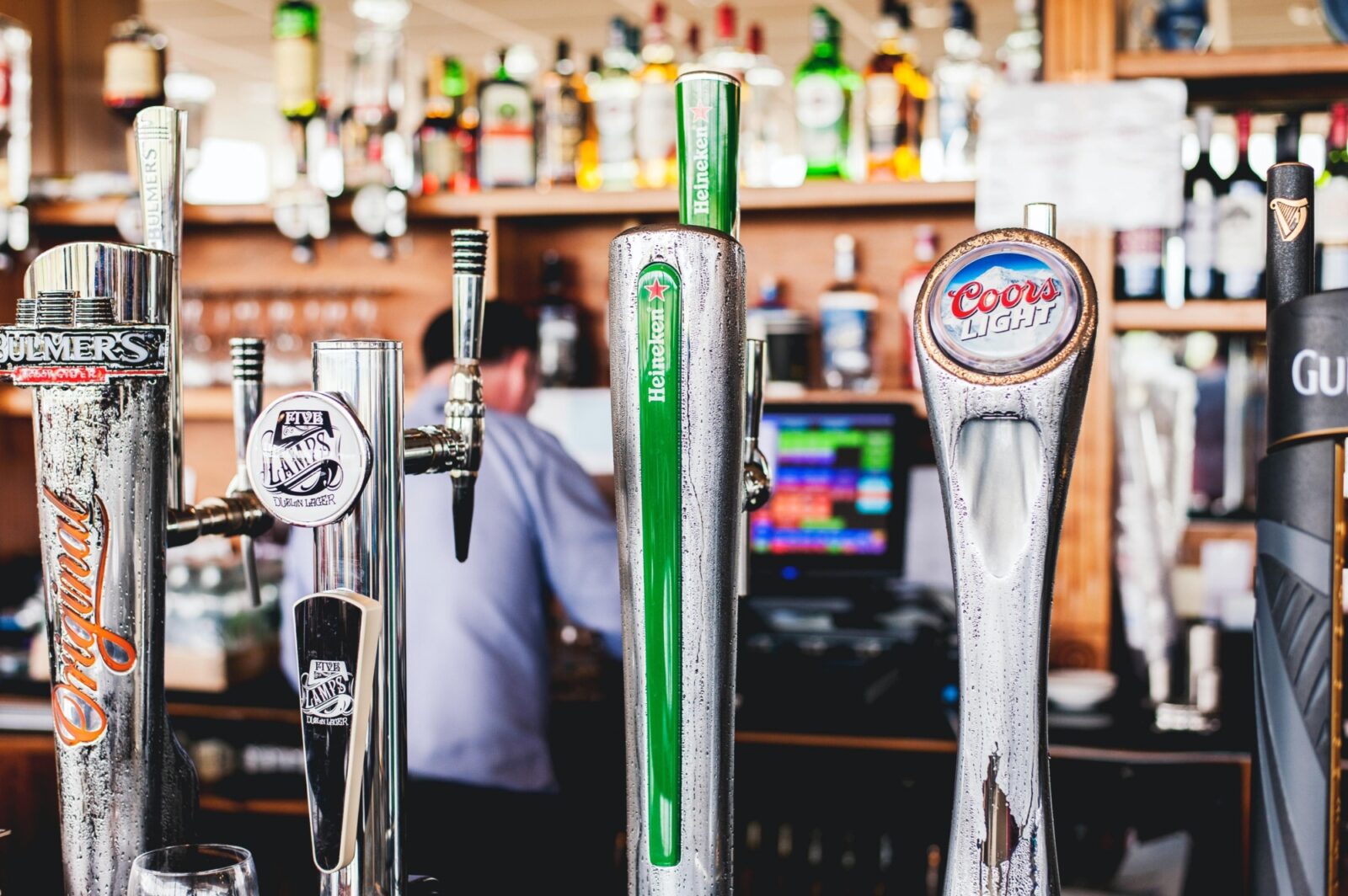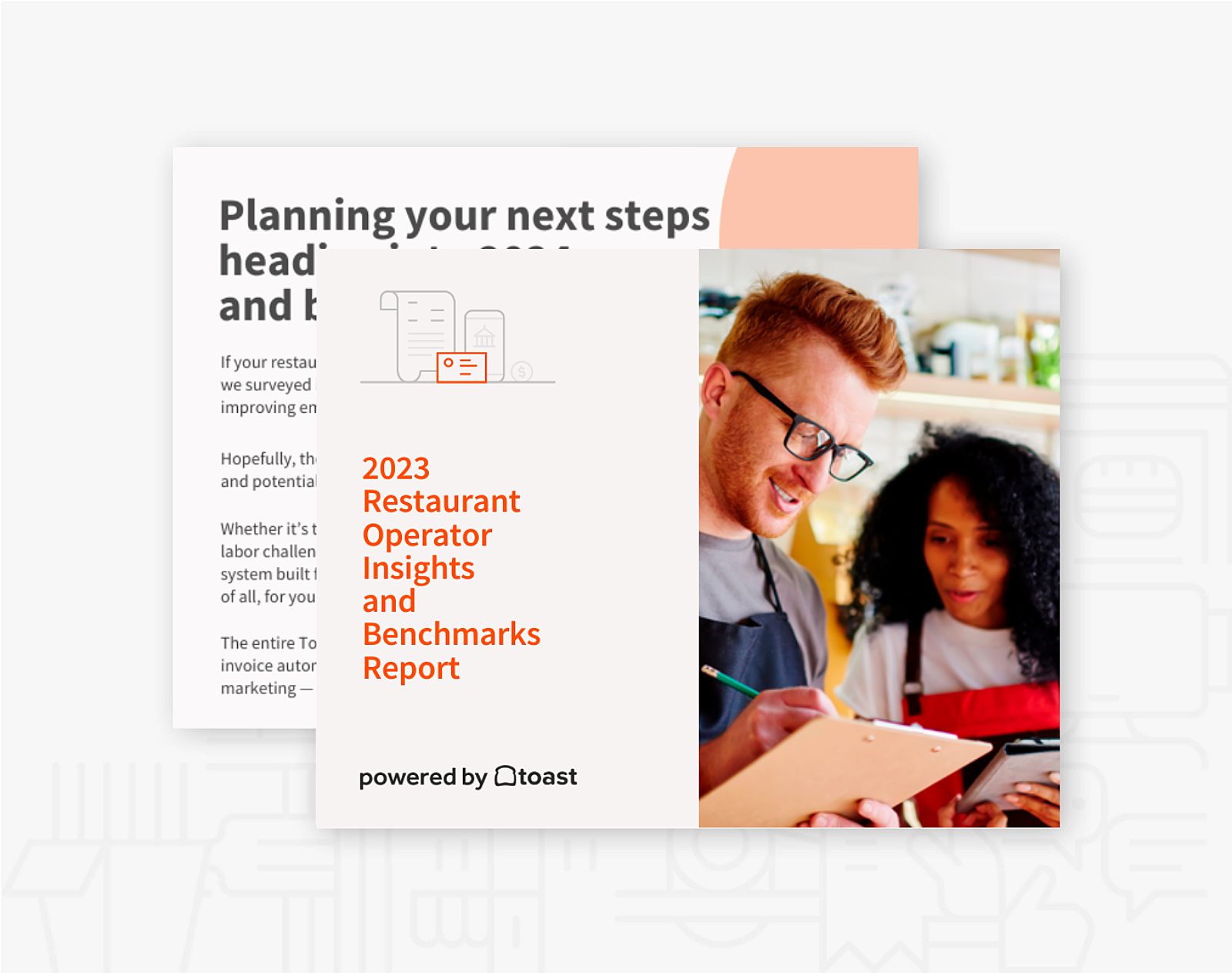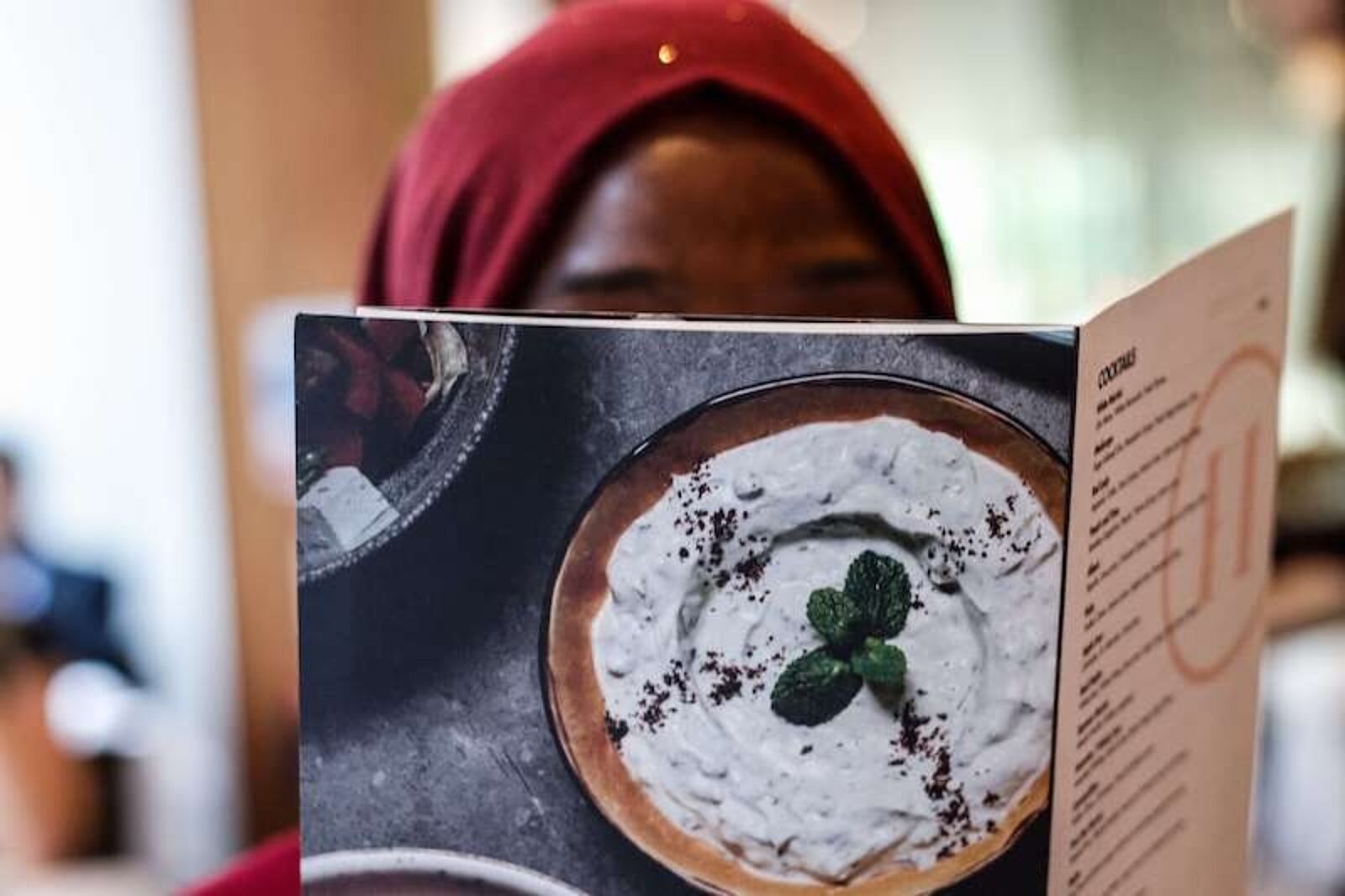
Most Popular Game Day Foods and Drinks in NFL Cities this Season
Take a look at the foods and drinks that are scoring with restaurant guests this season across all cities with an NFL team.

Justin GuinnAuthor


Restaurant Operator Insights Report
See insights from real restaurant operators which can help you benchmark your current and planned restaurant technology stack against your peers as we head into 2024 and beyond.
Get free downloadRestaurant operators in a city with a professional football team should be working to maximize the impact of NFL games on their business.
The presence of a team can bring an influx of fans into bars and restaurants around town — for local home games as well as when the team is away. This increased foot traffic can help boost order volume and provide opportunities for specials and promotions to further capitalize on increased food and drink sales.
To help better understand the impact of game-day Sundays and which food and alcohol items are most popular in season, Toast analyzed food and alcohol sales through Week 13 of the 2023 season.
In this article, you’ll learn just how to impactful football Sundays are compared to Sundays out of season. You’ll see what food and alcohol items have the largest bumps in order volume as well as attributable sales revenue. All this can help you optimize your business to make the most of Sundays during the season.
Top takeaways from our NFL cities restaurant analysis
Chicken wings are the most popular game day food in NFL cities during the season — with a 25% increase in average order volume on Sundays in the season compared to Sundays out of the season.
Hard seltzer is the most popular game day alcohol in cities with a team during the season — with a 47% increase in order volume on Sundays in the season compared to out-of-season.
Overall, total food items sold jumps 2% and alcohol 6% on Sundays in season compared to out of season.
Green Bay boasts the largest increase in restaurant spend on food and alcohol across all 30 cities with a team in season compared to out of — with a boost of 27% for food and a whooping 169% for alcohol on in-season Sundays.
With a 7% increase over the in-season Sunday average, week 5 of the season (10/8) saw the most food and alcohol sales at Toast restaurants across cities with a team.
Food and alcohol insights from bars and restaurants in NFL cities
Toast is the point of sale system built for restaurants.
We dug into food and alcohol sales data from a mix of full-service and quick-service restaurants in all 30 cities with a team that are using the Toast platform.
Our analysis considers every Sunday from Week 1 of the season through Week 13 (September 10 - December 12, 2023.) To highlight the impact of the football season, we compared averages from Sundays in season with Sundays out of season (the first Sunday after the Super Bowl until the season began again.)
Top food and alcohol insights for Sundays during the football season
Overall average food items sold jump 2% for game day Sundays compared to Sundays out of season — and average food sales measured by GMV increase 3% for football Sundays.
Overall average alcohol items sold jumps 6% on Sundays in season compared to those out of season — and average alcohol sales as measured by GMV increase 3% for football Sundays.
Unsurprisingly, chicken wings seem to be the most popular food across NFL cities during the season. Wings see a 25% increase in total items sold per week in season vs. out of season.
Pizza, pasta, nachos, and burritos all see a 6% increase in average items sold on Sundays in season vs. out of season — with chicken tenders seeing a 5% increase.
Soups/stews, noodles/ramen, and curry all see a 23%, 17%, and 10% increase, respectively. This may very well be due to cooler weather and the changing of the seasons — rather than the football season itself.
For alcohol, hard seltzer sees the greatest increase — with a 47% increase in average items sold on Sundays in season compared to out of season.
Red wine (23%), lagers (23%), whiskey (20%), and liqueur (17%) round out the top five increases in alcohol.
Biggest weeks of the season for food and alcohol sales across cities with professional football teams
Here’s a breakdown of total food and alcohol sales (as measured by GMV) for every Sunday of the season (through week 13.)
Our data shows that the biggest weeks for combined food and alcohol GMV (compared to the in-season Sunday average) were week 5 (10/8), week 9 (11/05), and week 7 (10/22).
These are the same top three weeks for overall food GMV. Our analysis shows that nachos, cheeseburgers, and hot dogs are the top items driving increased food sales for these most popular weeks.
For alcohol sales, our data shows that the biggest weeks in the season (through week 13) were week 4 (10/1), week 5 (10/8), and week 9 (11/05). Our analysis shows that hard seltzers, rose, and both lagers and ales are the top items driving increased alcohol sales for these most popular weeks.
Breakdown of food and alcohol sales across cities with a professional football team
Toast looked across all 30 cities with professional football teams for this analysis (Los Angeles and New York each have two teams.)
When we look at the city level, we’re able to see the great increase in restaurant spending on food and alcohol on Sundays in season compared to Sundays outside of the season (as measured by GMV.)
Green Bay sees a significantly higher increase in restaurant spend on food and alcohol, with a boost of 27% for food and a whooping 169% for alcohol on in-season Sundays.
For in-season increase in Sunday food spend, Green Bay is followed by Cincinnati (12%) and New Orleans (11%). And for alcohol, Green Bay is followed by Cleveland (48%) and Cincinnati (39%).
Here’s a breakdown on all 30 cities with a team, listed alphabetically:
Tips for restaurant operators in cities with a team to make the most of the season
Regardless of how individual NFL cities break down, there is opportunity for restaurants to capitalize on increased sales during the season.
Increased tourism and visiting fans
These games draw fans not only from the local area but also from out of town. Visiting fans contribute to the local economy by spending money on accommodations, food, drinks, and souvenirs.
For example, Shaz Khan, owner of Tono Pizzeria & Cheesesteaks in Minneapolis, says they always get tons of buzz whenever their hometown Minnesota Vikings host the Philadelphia Eagles.
“Being a restaurant that serves cheesesteaks, if the Philadelphia Eagles play our home team we see a huge surge in cheesesteaks sales,” Khan says. “Local news channels reach out to do a segment on where to eat for the game. This helps as well.”
If you don't have a connection with an iconic city's food, there are still ways to take advantage of football tourists.
Operators can collaborate with local hotels, tourist attractions, or transportation services to create bundled experiences for visiting fans. This could involve joint marketing efforts, such as offering promotional discounts to hotel guests who dine at your restaurant or hosting football-themed events.
Don’t sleep on breakfast offerings
Restaurant operators in cities with a team have an array of opportunities to capitalize on the influx of fans brought in by the season. One potential strategy to consider is extending breakfast offerings on Sundays to cater to fans who come to dine in and watch the game.
Expanding your regular Sunday brunch menu with game day-themed items can help attract football fans who want to catch the early games or enjoy a pre-game meal before heading to the stadium. Offering morning favorites like eggs, bacon, and french toast, as well as brunch specialties like breakfast tacos, chicken and waffles, or breakfast sandwiches, can help you appeal to a more diverse target customer — especially for those early start London games and those cities on the west coast that have an early 10 am spot.
A successful brunch menu typically pairs its food items with Bloody Marys, mimosas, coffee-based cocktails, and other alcohol items. These drinks can help create a festive atmosphere that football fans look for when gathering to enjoy the game.
Tailgating culture: A catering opportunity
One of the most integral aspects of live game experiences is tailgating. Many fans gather in parking lots for a football party before the game — cooking, eating, drinking, and socializing.
This pre-game ritual provides an excellent opportunity for restaurant owners/operators to capitalize on the excitement and increase sales via game day snacks.
You can consider offering formal catering services specifically tailored for tailgating parties — as well as tailgate-appropriate takeout options that fans can pick up on their way to the game. This can include pre-packaged food, beverages, and even rentals of grilling equipment or coolers.
There are plenty of appetizers that can work great for America’s game. Buffalo chicken dip, raw veggies and hummus or guacamole, meatballs, queso and chips, and different flavored sliders can all be great options.
BBQ brisket or pork, tacos and other Mexican food, Italian subs and similar sandwiches can all be good. Operators should look for menu items that don’t need to remain crispy in travel.
Providing convenient and quality tailgating options can help you attract fans who prefer to outsource their pre-game meal preparations. Partnering with local businesses that specialize in tailgating supplies or team merchandise can also help drive mutually beneficial cross-promotions.
Restaurant Operator Insights Report
See insights from real restaurant operators which can help you benchmark your current and planned restaurant technology stack against your peers as we head into 2024 and beyond.

Scoring touchdowns during the season and beyond
It’s critical that restaurants forecast and plan for various trends throughout the year. Holidays, such as Valentine’s Day, sports seasons, and special events, such as the Super Bowl, can all be opportunities to capture dependable sales.
If you want to get started with restaurant forecasting, you can start small by dive into your sales data from last year’s Super Bowl. Past restaurant sales data can give you an idea of what to expect, though it’s important to put that in context of any relevant marketing efforts employed for the day. Many restaurants also keep running notes to provide context to sales. This would be a great time to read back through any such notes as well.
All this data can help set expectations, staffing, food orders, and prep work for events throughout the year as well as general slow and busy seasons.
If you’re already doing forecasting, good work! How can you go deeper and get more precise? Perhaps you can turn your eye to maximizing margins by recipe costing and calculating plate costs.
If reviewing past sales, forecasting, and general analysis isn’t your strongest skill, no sweat! The right tools can help simplify this work. It starts with a strong foundation in restaurant POS system and basic reporting tied to it.
Methodology
This report, powered by Toast, uncovers key trends across the restaurant industry through aggregated sales data from all 30 U.S. cities that host an NFL football team.
This information is provided for general informational purposes only, and publication does not constitute an endorsement. Toast does not warrant the accuracy or completeness of any information, text, graphics, links, or other items contained within this content. Individual results may vary. Toast does not guarantee you will achieve any specific results if you follow any advice herein. It may be advisable for you to consult with a professional such as a lawyer, accountant, or business advisor for advice specific to your situation. This report is not indicative of the operational performance of Toast or its reported financial metrics.
Forward-Looking Statements
This report contains forward-looking statements within the meaning of the Private Securities Litigation Reform Act of 1995, which are not guaranteed, and are subject to risks, uncertainties, and changes in circumstances that are difficult to predict. Forward-looking statements are based on our current expectations and assumptions, which may not prove to be accurate. These statements are not guarantees and are subject to risks, uncertainties, and changes and we assume no obligation to update or revise any forward-looking statement, except as required by law. Specific factors that could cause actual results to differ materially from forward-looking statements include, but are not limited to, the effect of economic conditions in the United States and globally, general industry conditions and the other important factors disclosed previously and from time to time in Toast’s filings with the Securities and Exchange Commission. Toast does not guarantee you will achieve any specific results if you follow any advice herein.
Is this article helpful?
DISCLAIMER: This information is provided for general informational purposes only, and publication does not constitute an endorsement. Toast does not warrant the accuracy or completeness of any information, text, graphics, links, or other items contained within this content. Toast does not guarantee you will achieve any specific results if you follow any advice herein. It may be advisable for you to consult with a professional such as a lawyer, accountant, or business advisor for advice specific to your situation.
Read More
Subscribe to On the Line
Sign up to get industry intel, advice, tools, and honest takes from real people tackling their restaurants’ greatest challenges.


